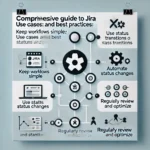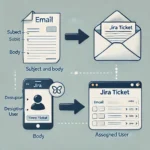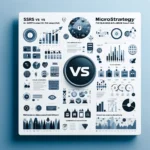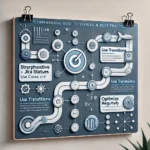Generative Artificial Intelligence (AI) is transforming the way we think about technology and creativity. This cutting-edge branch of AI enables machines to generate content, art, and even human-like text autonomously. In this blog post, we will explore what generative AI is, its benefits, provide real-world examples, offer external links for further exploration, and answer frequently asked questions (FAQs) to help you better understand this exciting technology.
What is Generative AI?
Generative AI refers to a subset of artificial intelligence that focuses on machines’ ability to create content, mimic human thought processes, and generate data autonomously. It leverages techniques like deep learning and neural networks to enable computers to produce original content, often indistinguishable from what humans create.
Benefits of Generative AI:
1. Creativity and Innovation:
Generative AI fosters creativity by autonomously generating art, music, and literature. It can inspire new ideas, accelerate content creation, and push the boundaries of human imagination.
2. Efficiency and Automation:
Generative AI automates content generation tasks, reducing the time and effort required for tasks like text generation, image synthesis, and data augmentation.
3. Personalization:
Generative AI can create personalized content tailored to individual preferences, enhancing user experiences in applications like recommendation systems.
4. Problem Solving:
Generative AI is used for complex problem-solving tasks, such as drug discovery, where it can suggest novel molecular structures.
https://synapsefabric.com/2023/09/11/bing-vs-google-a-comparative-analysis/
Examples of Generative AI:
1. GPT-3 (Generative Pre-trained Transformer 3):
GPT-3 is a language model developed by OpenAI. It can generate coherent and contextually relevant text based on prompts. It’s used for content creation, chatbots, and even coding assistance.
2. Artificial Creativity:
Generative AI has been used to create art, music, and literature. For example, AI-generated paintings have been sold at auctions, and AI-authored books have been published.
3. DeepDream:
Google’s DeepDream uses generative AI to transform photos into surreal, dream-like images by enhancing patterns it detects within them.
4. Data Augmentation:
In machine learning, generative models like GANs (Generative Adversarial Networks) are used to augment datasets by generating synthetic data points for training.
External Links for Further Exploration:
These external links provide hands-on experiences with GPT-3, insights into DeepDream, and a detailed explanation of GANs for further exploration.
Frequently Asked Questions (FAQs):
Q1: How does generative AI work?
A1: Generative AI relies on neural networks and deep learning algorithms to analyze patterns and generate new data based on learned patterns.
Q2: What are some ethical concerns with generative AI?
A2: Ethical concerns include the potential for generating fake content, deepfakes, and biased outputs, which can have societal and privacy implications.
Q3: Can generative AI replace human creativity?
A3: While generative AI is powerful, it complements human creativity rather than replacing it. It can automate certain creative tasks but relies on human guidance and evaluation.
Q4: Are there applications of generative AI in healthcare?
A4: Yes, generative AI is used in drug discovery, medical image analysis, and personalized treatment recommendations.
https://synapsefabric.com/2023/09/09/navigating-the-future-with-ai-driven-business-automation/
Generative AI is a transformative technology that empowers machines to create content, solve complex problems, and enhance user experiences. It’s fostering innovation in various industries, from art to healthcare. As generative AI continues to advance, it will unlock new possibilities and shape the future of human-machine collaboration, ultimately leading to greater creativity and efficiency in a wide range of applications.






